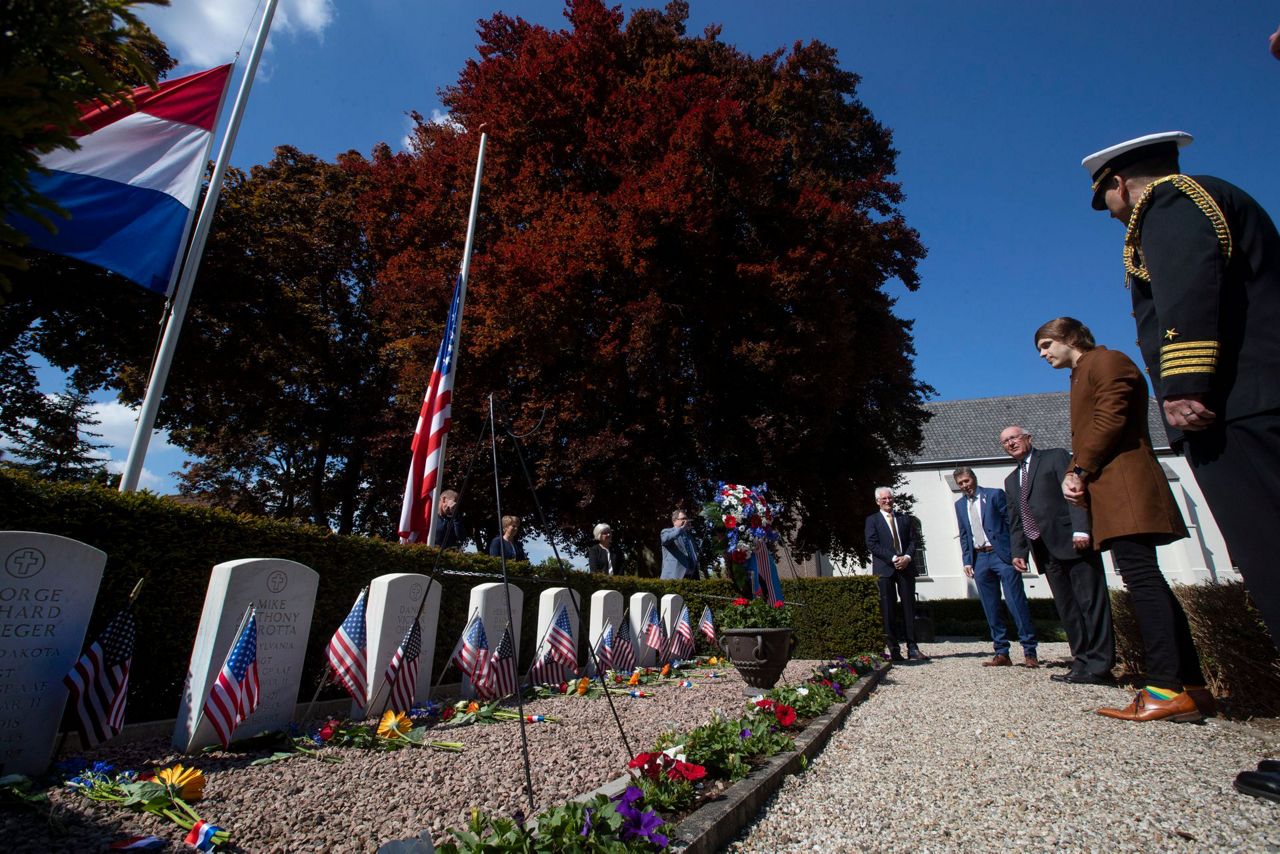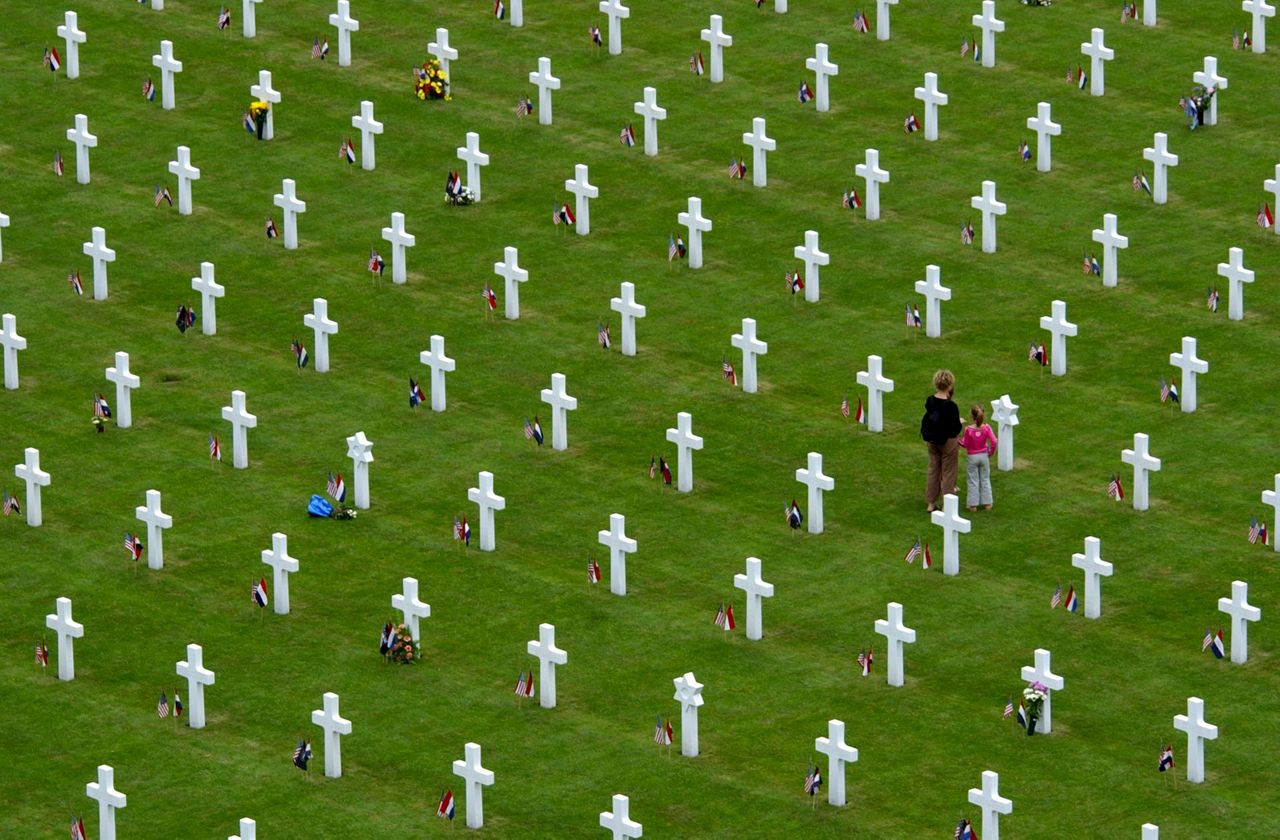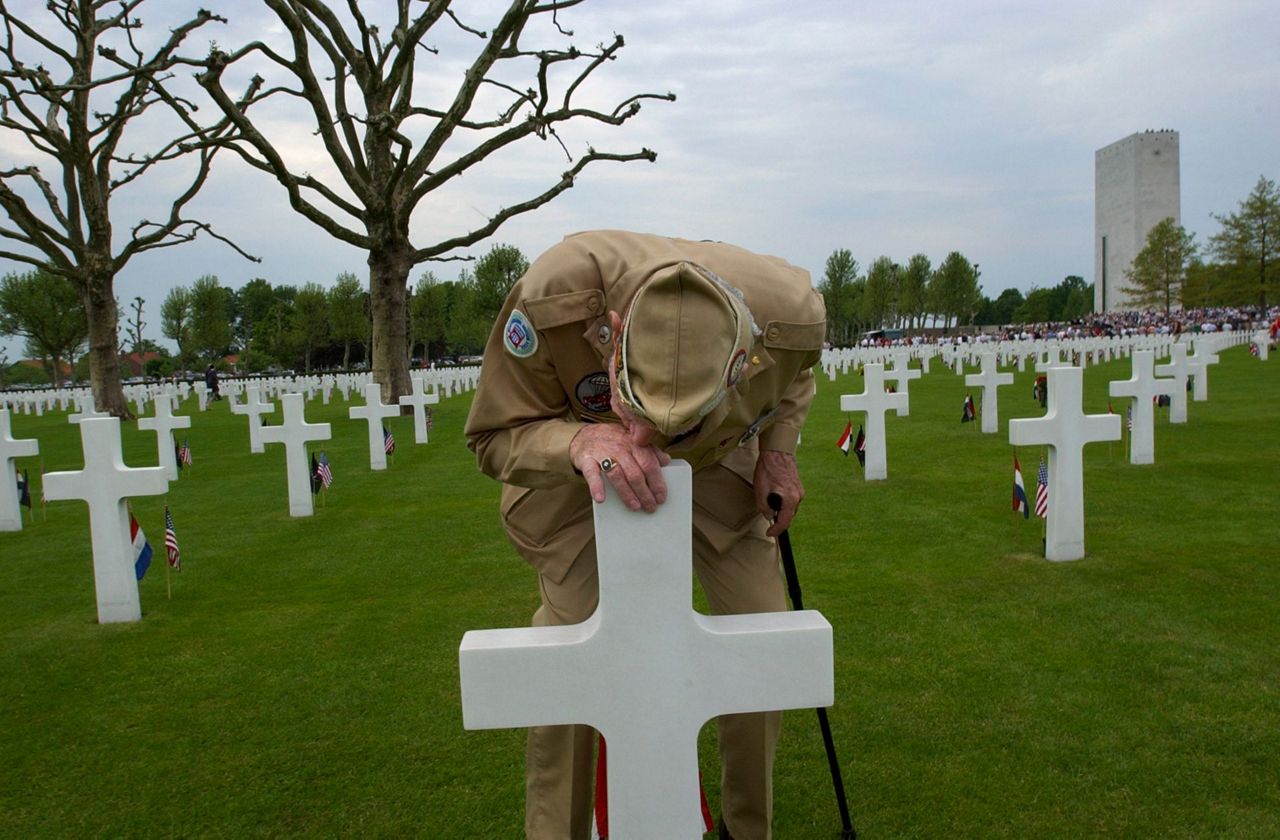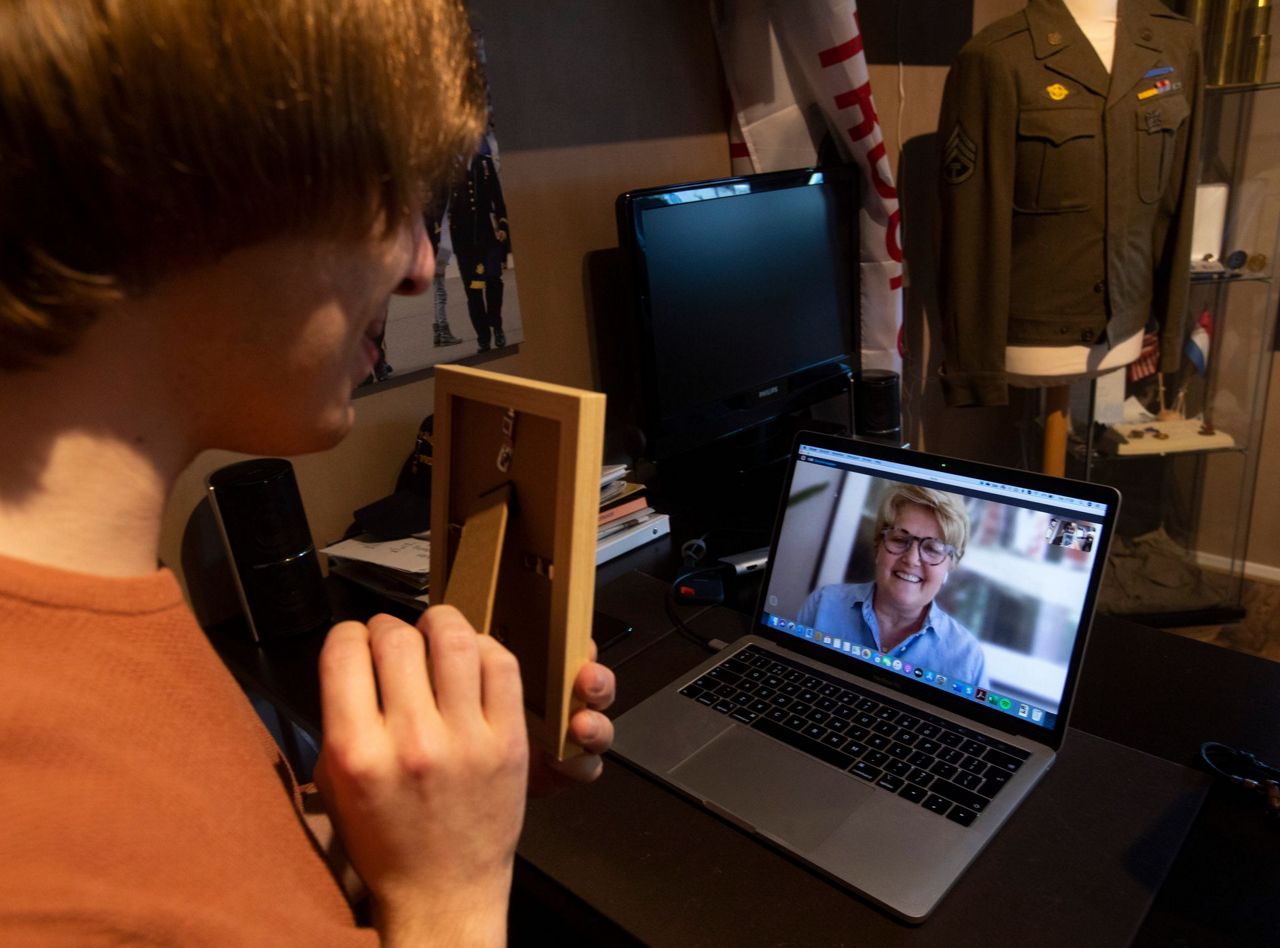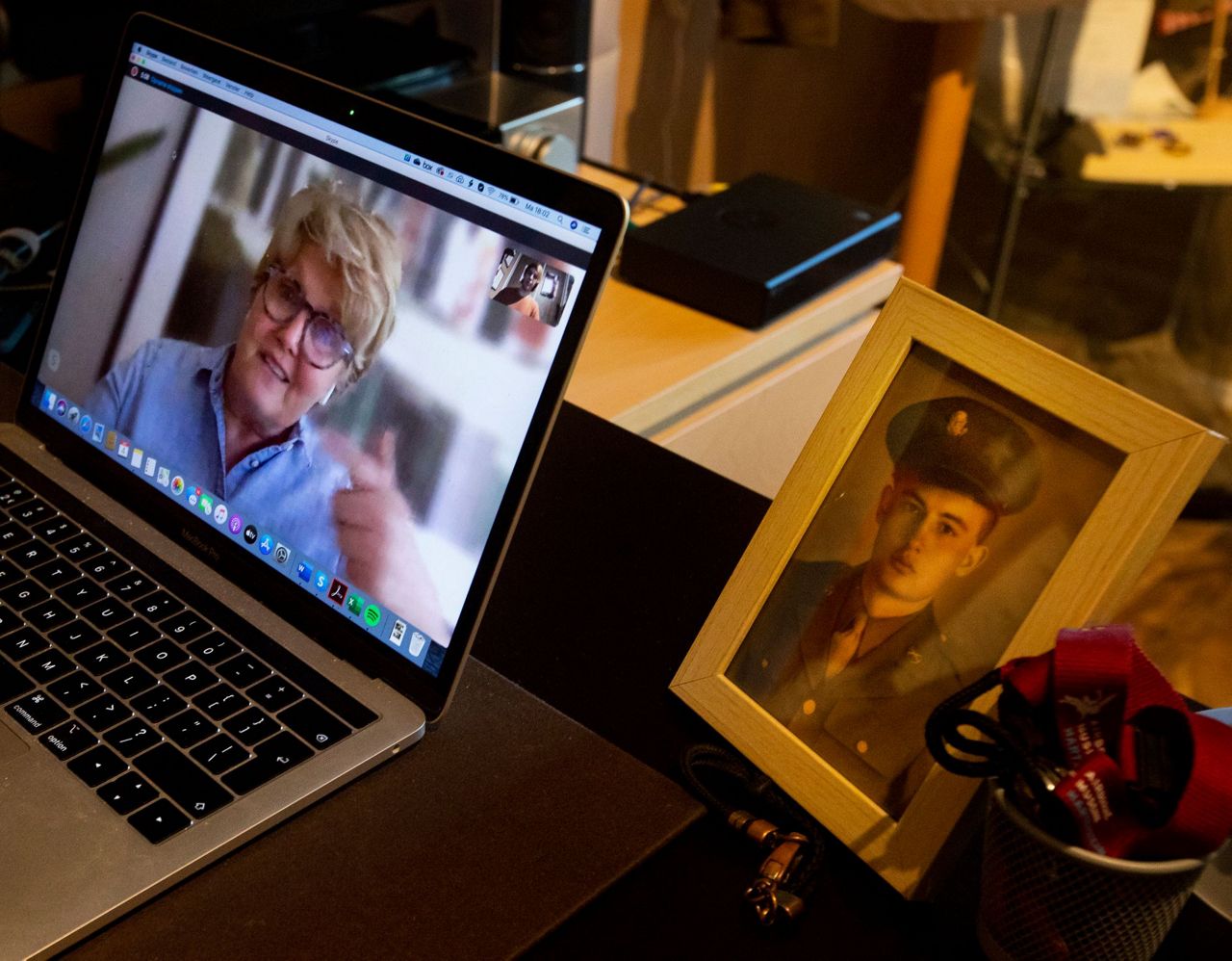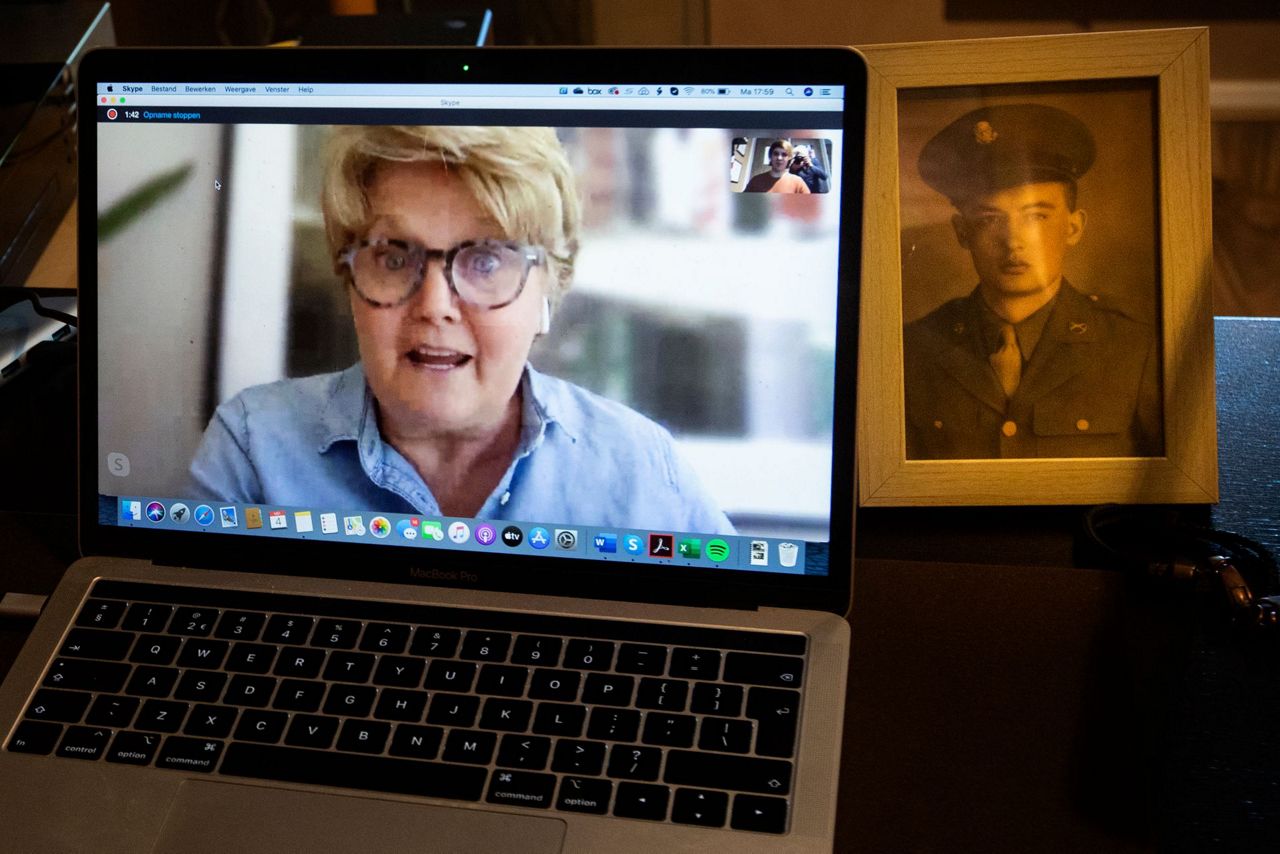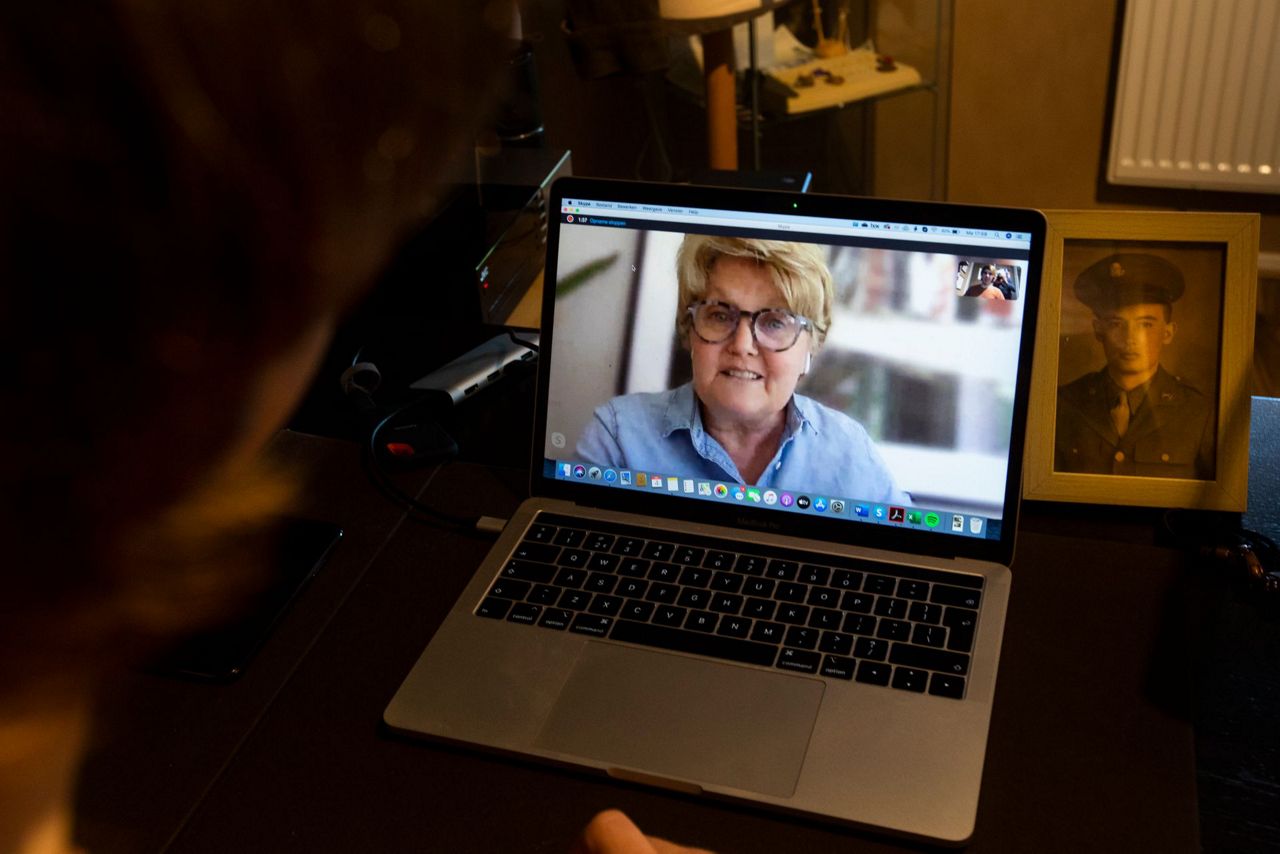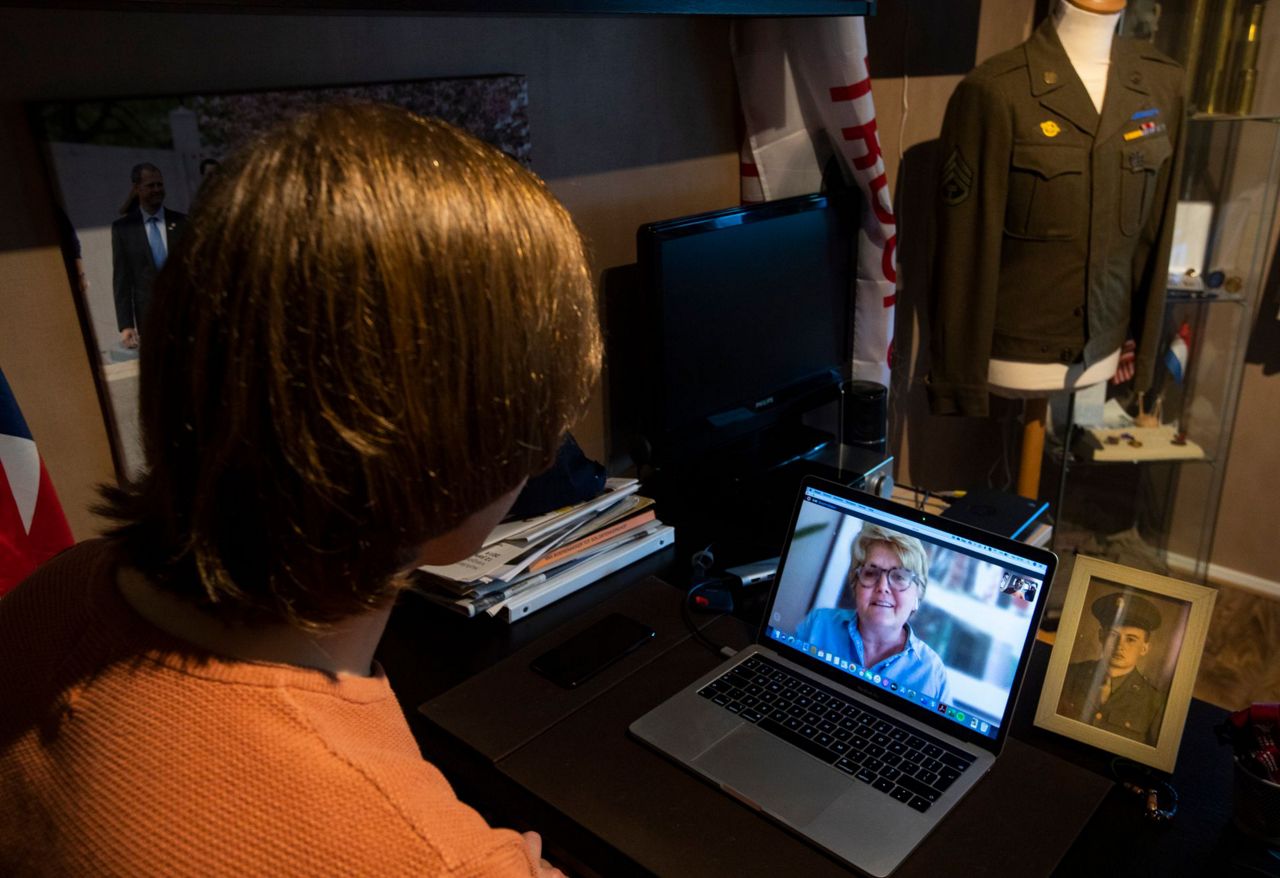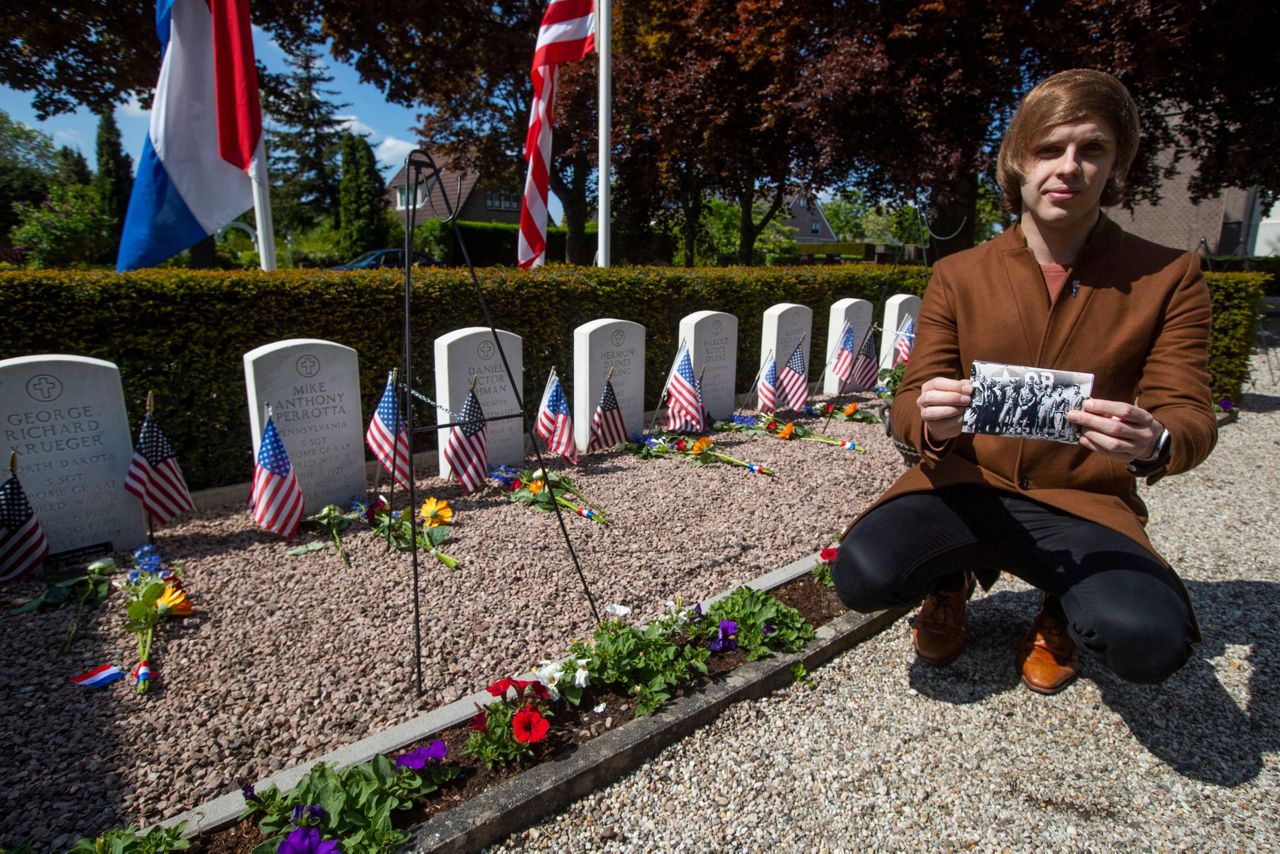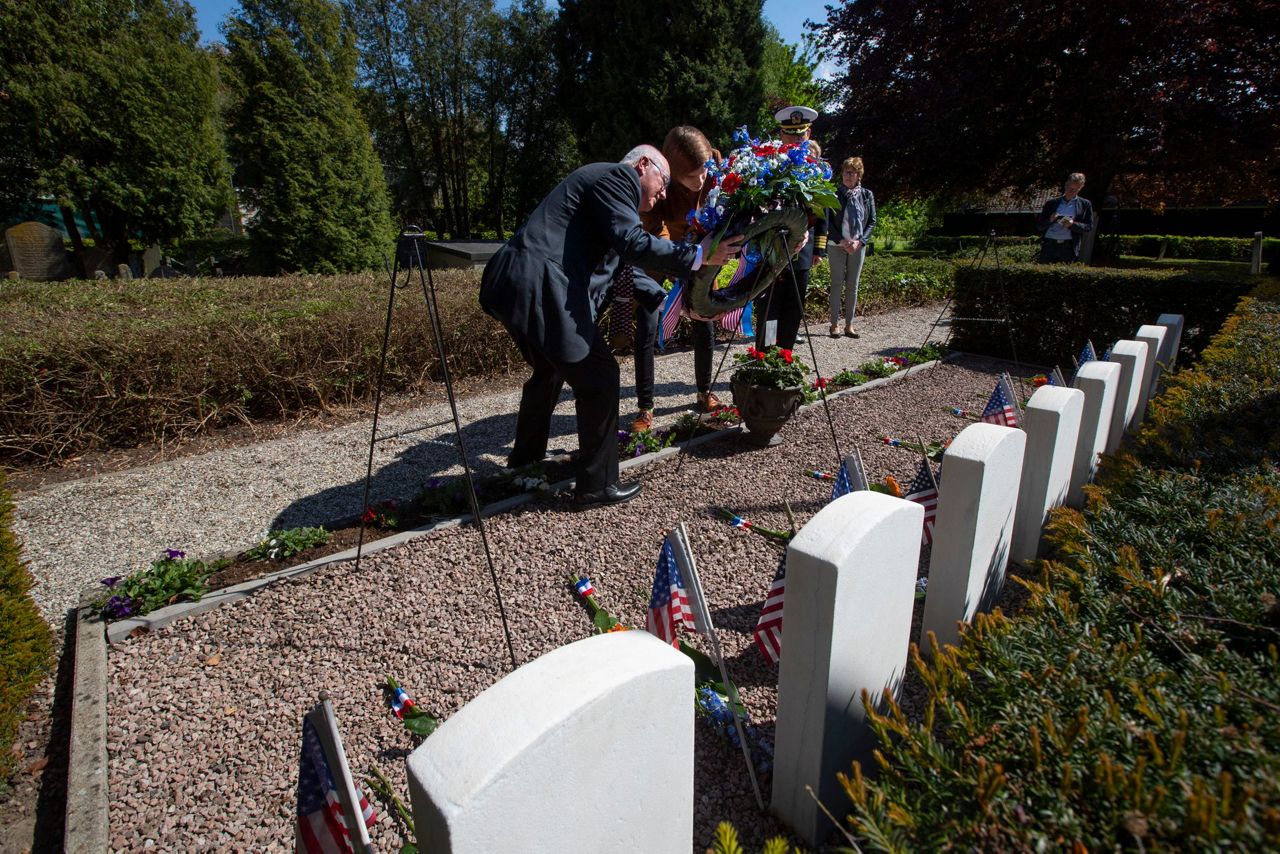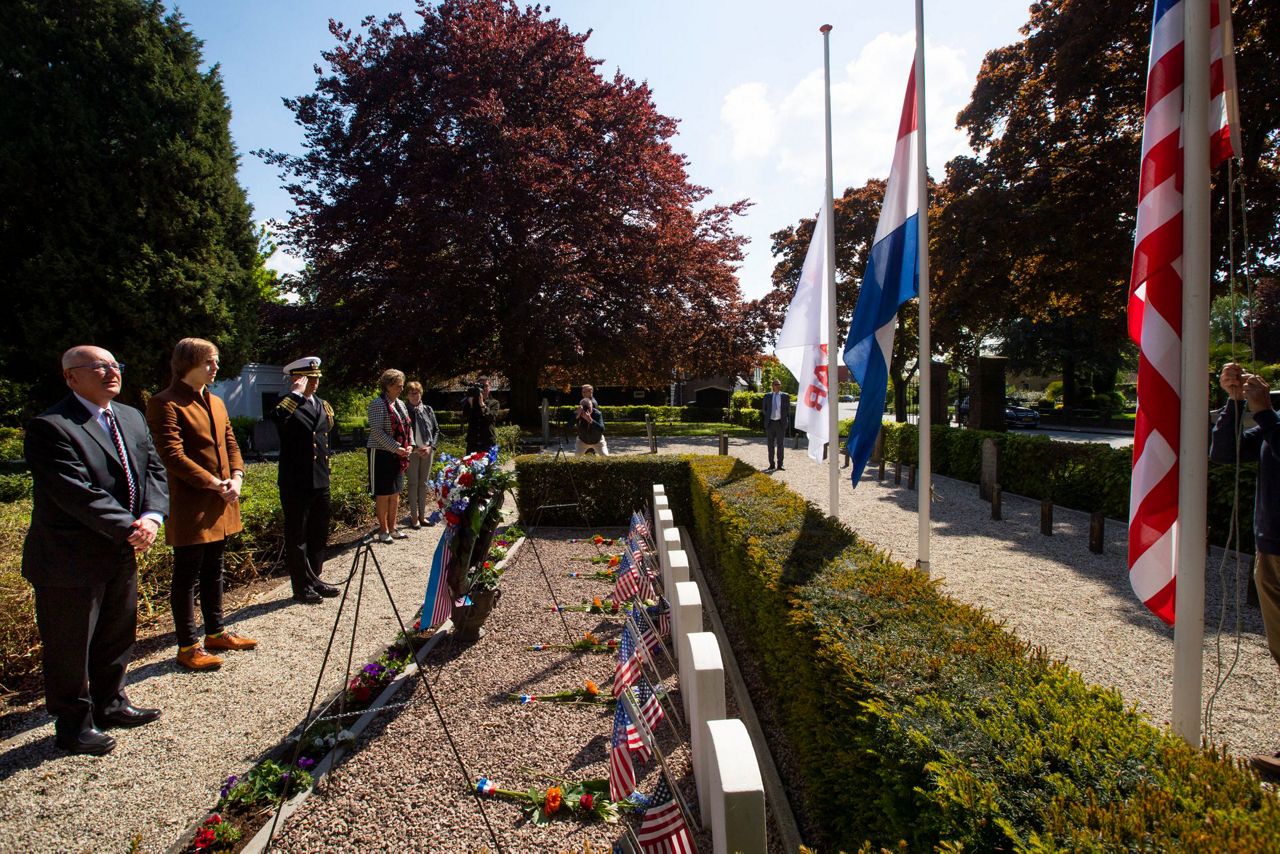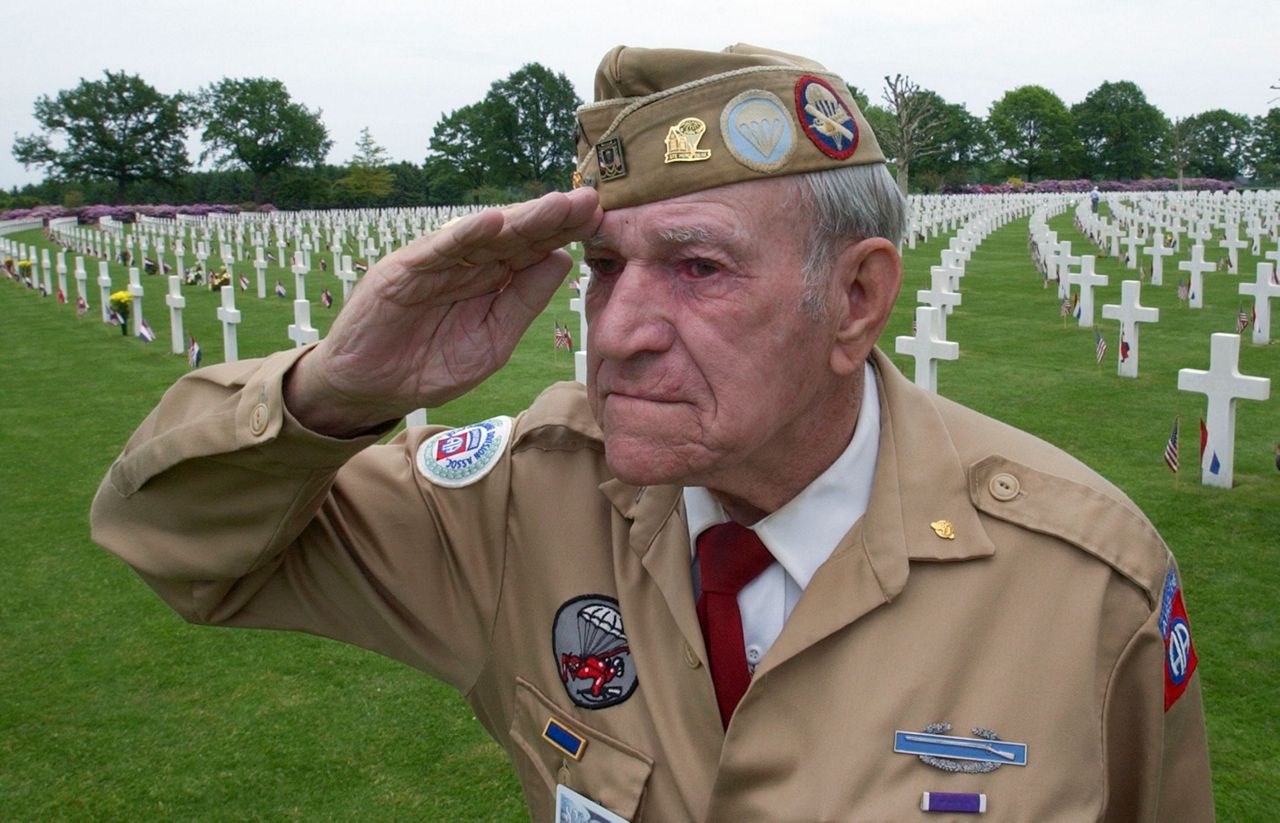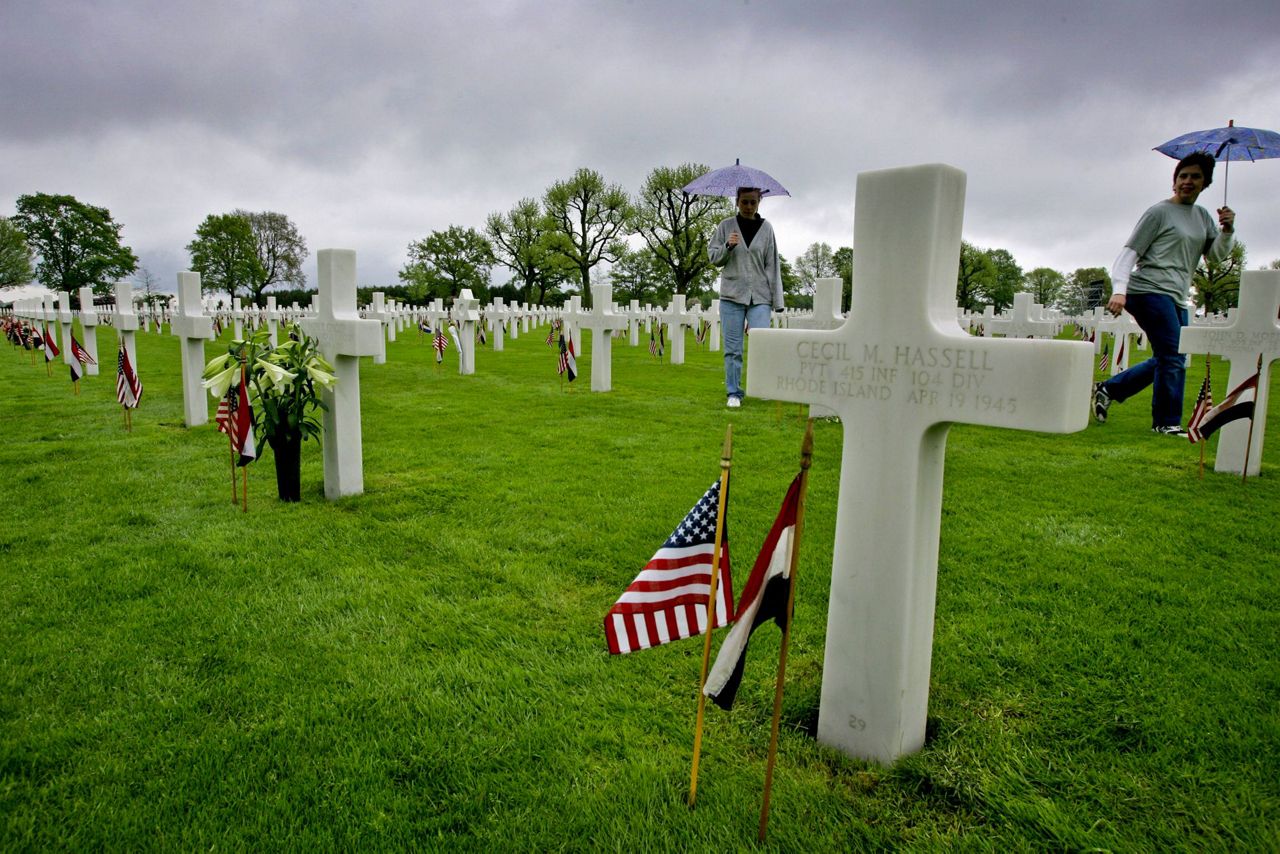OPIJNEN, Netherlands (AP) — Staff Sgt. Maurice Gosney was just a name carved on a white cross until a young Dutch historian went in search of the fallen American soldier's face.
Killed in an ambush near the German village of Sulzfeld on April 11, 1945, Gosney is one of more than 10,000 American servicemen and women buried or memorialized at the Netherlands American Cemetery in the southern Netherlands town of Margraten.
A Dutch-based band of volunteers is now on a mission to put faces to all those names. It's a way of bringing history alive and of expressing their enduring gratitude to the Allied forces that liberated the Netherlands from five years of brutal Nazi occupation.
Historian Sebastiaan Vonk's Faces of Margraten project, founded six years ago, already has uncovered photos of some 7,500 of the war dead. They were due to be displayed next to graves in Margraten this week as Europe commemorates the 75th anniversary of the end of World War II in the continent.
But coronavirus restrictions forced the closure of Margraten and cancellation of the event. Much to the disappointment of Gosney’s niece, Kristin Wright.
Wright, from St. Louis, Missouri, had already booked tickets to bring her 85-year-old mother to visit Gosney's grave this week. She had to cancel the trip, but is already looking ahead.
“Now we say, ‘well, it’s a great goal for next year.’ We’ll be there next year," she said in a Skype interview.
Wright’s mother was just 10 when Gosney was killed by a sniper's bullet, but she still has fond memories of her brother from before he went away to fight in Europe.
“He would always joke with her and pretend like he was hanging her up on the clothesline to dry. So that’s like a real big memory,” Wright said. “He called her `squirt.' And in the letters that he wrote home, he would mention ‘how’s squirt doing in school?’ things like that.”
Wright learned about Vonk’s project two years ago when she visited Margraten. Since then, she has sent photos to Vonk and in return she's gotten a sense of her family's history coming alive.
Just a few days ago, her sister brought her parents around and they sat in Wright's back yard reading a book by a former member of Gosney’s army unit that described the ambush and his death.
“It was a really, really emotional thing,” she said.
Vonk's work is not the only expression of Dutch gratitude to the Allied soldiers. All of the graves at Margraten have been “adopted” by locals who regularly visit and bring flowers to the fallen Americans, buried in foreign soil thousands of miles from their families.
Vonk, 27, adopted one of the graves when he was just 13 and his fascination for the war and in particular the role of American soldiers grew from there.
He still visits the grave he adopted, of Lawrence Shea, an American infantry corporal from Brooklyn killed a little over a month before WWII ended in Europe.
“I think everyone will have a different thought in that moment when they stand in front of a grave," Vonk said. "For me, it’s really a moment of reflection.”
A rare moment these days, as the hunt for photos has proved very time-consuming.
Volunteers in the Netherlands, Belgium and the United States trawl through newspaper archives, libraries and genealogical sites, and contact families to track down photos. One serviceman's picture was found recently because he was featured in a newspaper story about drivers caught in a speed trap.
Vonk and the other volunteers still have some way to go to track down pictures of all the Americans at Margraten. In total, 8,301 are buried there and another 1,722 have their names inscribed on the Walls of the Missing.
The project has earned admiration from the U.S. ambassador in the Netherlands, Peter Hoekstra. On Monday, Hoekstra asked Vonk to join him in laying a wreath at the graves in the tiny rural village of Opijnen of eight crewmen from an American B17 bomber shot down over the Netherlands on July 30, 1943.
“What Sebastiaan does by putting a face with every grave, it’s also that every face, every individual, will never be forgotten,” Hoekstra said. It’s just awesome to see the thinking, the creativity and the initiative that he and his organization have taken.”
Wright’s family is a case in point. She said they rarely talked about Gosney's death until their visit to Margraten and involvement with Vonk’s project.
“It just made it all so present,” she said. “And it created (an) unbelievable opportunity in my mind for our family to then kind of open up the box and start talking about this, and finding out more and making connections."
___
Follow AP’s coverage marking the 75th anniversary of the end of World War II in Europe at https://apnews.com/WorldWarII
Copyright 2020 The Associated Press. All rights reserved. This material may not be published, broadcast, rewritten or redistributed without permission.
